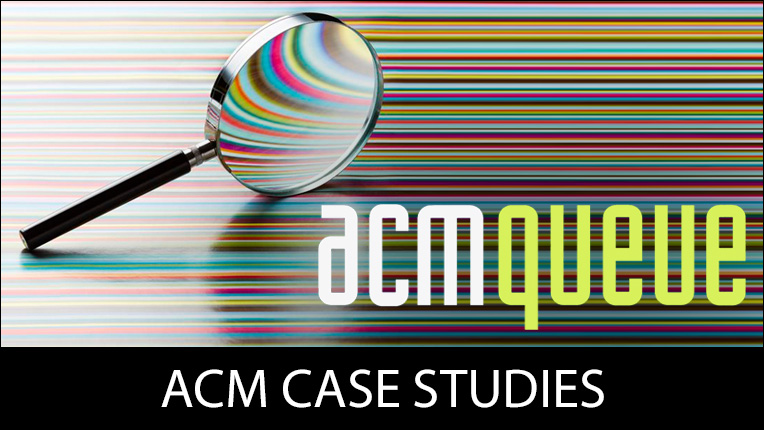Budgeting Guidelines
Publication Revenue
This includes revenue from the sales of single copy proceedings and other publications, the Member Plus Program subscribers, Membership Directories, Slides, Videos, etc.
Subscription Rates
Subscribers may be individual subscribers, and subscribers to the SIG Institutions Newsletter package. Subscribers receive the newsletter only. They are not members of the SIG. The subscription rates are be in effect for the entire fiscal year. Revenue needs should be carefully thought out since there is both a delay in the impact of an increase on revenue, and no opportunity to change dues in the middle of the year since all membership materials are printed in March for the full year.
* See the membership section for complete explanation of dues rates.
Full and Partial Air Service Rates
Foreign area SIG members and subscribers are able to opt to have their publications sent via air freight (actually a combination of air and surface mail) or air printed matter if they desire faster delivery than the normal surface mail service. There is a surcharge for each of these options which will offset the higher costs associated with providing the faster service. The SIG must therefore budget income from the surcharge. The fees for these optional services come in with members dues. At that time they are applied to the SIGs revenue account. When the newsletters are mailed via these services the expenses will appear in the SIGs foreign postage expense account.
Before finalizing this fee you will need to calculate the average cost of providing this service so that you will understand the fees which should be established for this extra service. That calculation is provided on the Section II/E Schedule 2 - Publications Distribution. The calculation used in that spreadsheet bases the postage costs on the historical information provided in Schedule 3.
Back Issue /Single Copy Newsletter Sales
Historical information is provided on the budget worksheet for the total unit sales, dollar volume of sales in FY N-2 and the average selling price, and the FY N-1budget for total dollar sales and average selling price.
Based on anticipated newsletter production from the Section II/E Schedule 1, Publications Production/Mailing expenses you should target an average selling price for newsletters, and a calculation of dollar sales.
In addition to the normal printing and distribution costs associated with Membership Dues and Subscription Revenue, other costs for back issuing newsletters should be taken into consideration when you set these fees. Back issuing is handled automatically when a member renews their membership or subscription late; or when the newsletter is not published according to schedule. This can add an average of 20% to the postage costs because these newsletter issues are not sent out at "bulk" rates as they are normally.
Back Issue /Single Copy Proceedings Sales:
Historical information is provided on the publications worksheet for the total dollar volume of sales in FY N-2 and the average selling price, and the FY N-1 budget for total dollar sales and average selling price.
Based on anticipated proceedings production from the Section II/E, Schedule 2, Publications Production & Mailing Expense, you should target an average selling price for proceedings, and a calculation of dollar sales.
Only the net income from publication sales is to be budgeted. For proceedings sales, the sale price minus $4.00 (the processing charge) should be used to compute the new income. As used here, proceedings means all special publications sold through headquarters. If the proceedings vary in price, the average net income per volume should be used in computing the total net income.
Publications Production/Mailing Activities
There are specific guidelines available through headquarters with regard to specifications for production, numbering volume/issues, appropriate cover copy, etc. These are found in the SIG Newsletter Editors Manual which is available through the SIG Program Director.
Historical information has been provided at the top of the Publications Worksheet. That information includes the total US, Canada and Central/So. American, and International members in your SIG as of June 30, FY N-2. We have also provided the number of individuals taking the various mailing options as of June 30, FY N-2.
You should also include here any proceedings that are also produced as newsletters or special publications that are not labelled as newsletters but are distributed to the membership.
And you should include any reprints that you anticipate having to produce to satisfy unanticipated demand or requirements for proceedings or newsletters that have already been produced.
Second Class Permit:
There can be considerable savings if you apply for second class postage for your newsletter. Two major requirements are that every newsletter be published on schedule and published at least four times a year. Restrictions are also placed on advertising and on inserts in the publication. If you would like to consider applying for second class postal rights, contact the Publications Manager in the Department of SIG Services at headquarters.
No. Pages:
Newsletters must print with page counts that are in multiples of four pages. It is, however, more cost effective to print in multiples of eights and sixteens than to print in multiples of fours. Twelve pages = 1 oz. And the cover = 1 oz.
No. of Copies:
The standard distribution for the newsletter is normally the total of the Projected number of Members for current FY (on the Budget Presentation), plus Newsletter subscribers, SIG Newsletter Package Subscribers (the libraries and other institutions which are important disseminators of technical information that have taken that subscription option), and subscribers to the Member Plus Program (if applicable for your SIG). Take all these numbers from the REVENUE STATISTICAL DATA section of the BUDGET PRESENTATION.
Overruns:
Add to the standard distribution any additional copies that might be inventories for single copy sales (estimate 1/8 of total units of Back Issue/Single Copy Sales (PUBLICATIONS STATISTICAL DATA). Add 200 copies overrun for SIGS under 3,000 and 300 copies for SIGS that are over 3,000 copies. Include additional copies to be sent to specified conferences, any special distributions or additional bulk copies sent to anyone not included in the regular no. copies.
For proceedings, you should determine from the conference organizers or from past history the number of pages for each proceedings. If the TMRF has not yet been prepared (refer to the list of conferences for this fiscal year included in the budget packet to see if there is any current year financial information provided), you may want to estimate the printing costs based on the PROCEEDINGS print table provided on the Printing Tables pages. Select the number of copies on the left, the number of pages across the top, and the intersection will be the printing cost.
It is very important that the SIG communicate to the conference organizers the page count assumptions since your postage distribution costs could be greatly affected by an increase in the page count when it comes time to print the proceedings. If you find that your assumptions have been too low, then the confernce should include something extra in the budget for covering the difference in cost. If the conference is cosponsored with another organization or another SIG, you should make sure that there will be adequate surplus to cover the additional costs of distribution.
If you plan to distribute the conference proceedings as one of the regular newsletters, or you plan to do a special distribution to the membership, this distribution could reduce the number of single copies of the proceedings that you might sell otherwise.
Publications Distribution Expense
At the bottom of the worksheet are two sets of statistics, one a summary of the membership number divided by "ZONE" (US; Canada, Central & So. America, and all other International) on the Y axis, and by "TYPE OF SERVICE" on the X axis, with a Total for ZONE at the far right, and a total for each TYPE OF SERVICE along the bottom of the matrix. To the right of that grid is another labelled "Type of Service - Pctg. to Total". This provides you with those same breakdowns expressed as a percentage. The spreadsheets will use these percentages to calculates the number of pieces that will fall into each category of postal rates.
The "Number of Pieces to be Mailed" are represented in columns 3 - 8 of this work sheet. The postage costs are calculated in columns 10 - 16. This schedule totals the costs in the last column and carries the costs to Schedule 2 to be incorporated into the Budget Presentation Summary.
Also the last two columns of the Schedule 2 is a calculation of the average calculation for the Air Freight Surcharge and the Partial Air Surcharge based on your total anticipated publications activity for this fiscal year.
Number of Pieces to Be Mailed:
As described earlier, the columns on the publication worksheet are the calculations based on the geographic distribution and service selection matrix percentage at the bottom of the worksheet Schedule 2 multiplied by the Standard Number of Copies column in Schedule 1 above. These numbers are the basis for calculating the total cost for Surface, Air Printed Matter, and Partial Air distribution costs.
Each column here corresponds to a column under the heading "COST OF MAILING PIECES BY TYPE OF SERVICE" on the right side of the worksheet. Only in the case of PARTIAL AIR are there two types of costs, one for KLM, and one for Freight to get the mailing to KLM. The KLM cost includes delivery of the piece from the arrival point on the international side to the individual. The KLM costs are included at the bottom of the POSTAL RATE CHART.
Partial Air Freight
This item includes freight charges associated with the shipment of SIG Newsletters going to foreign countries for those members who opt for air freight service. These newsletters are sent via KLM freight service to Amsterdam and are then placed in the Dutch mail system.
Publications Promotions Activities
You should consider the promotional efforts the SIG is going to support in order to attain the broadest possible dissemination of the technical publications; and to generate the revenue as budgeted for proceedings, and newsletter sales in the revenue budget presentation.
Advertising
Advertising other than the Publication Catalogue should be considered when new publications come out. Corporate SIG sponsors, Educational SIG sponsors, related technical publications, and conference programs are good vehicles for announcements of a new SIG proceeding or other publication.
Types of Expenses to budget:
847 - Design and Typesetting
866 - Media Ads
New Publications Mailings:
In the absence of another vehicle for informing the membership about available new publications, you may want to do a direct mail piece with an order form to your membership, or to prepare one for insertion into registration packets for upcoming conferences.
SIG Editors Manual
Date Revised 7/1/93
ACM Case Studies
Written by leading domain experts for software engineers, ACM Case Studies provide an in-depth look at how software teams overcome specific challenges by implementing new technologies, adopting new practices, or a combination of both. Often through first-hand accounts, these pieces explore what the challenges were, the tools and techniques that were used to combat them, and the solution that was achieved.

Lifelong Learning
ACM offers lifelong learning resources including online books and courses from Skillsoft, TechTalks on the hottest topics in computing and IT, and more.

